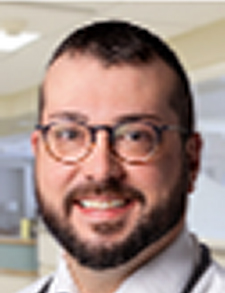 Being a new kid on the block can be daunting, even in the world of SHM’s Special Interest Groups (SIGs).
Being a new kid on the block can be daunting, even in the world of SHM’s Special Interest Groups (SIGs).
Longer-standing SIGs have board protocols, event schedules, and a history to rely on when trying to do their best by their members.
Newer groups have none of that.
That said, veteran SIG leaders can grow weary of entrenched issues, less engagement than they might like, or the struggle to recruit new members.
Newer groups have none of that.
And that yin-and-yang is how Joel Phelps, DO, FAAFP, views the Hospital Medicine Fellowships SIG he vice-chairs. The group started in 2021 and Dr. Phelps feels like he’s laying the groundwork for the future.

Dr. Phelps
“We keep asking ourselves, ‘What’s the five-year plan? What’s the 10-year plan?’” said Dr. Phelps, a hospitalist with Deaconess Health System in Evansville, Ind. “From the discussions I’ve had with people, I’d like to see us lay a foundation for a hospital fellowship curriculum. I would like to see the SHM hospitalist fellowship website program up to date and easily connectable in that way.
“I hope the SIG continues to grow in membership. And I hope we continue to have more collaboration among people with a variety of backgrounds, including internal medicine, family medicine (and advanced practice practitioners.)”
Dr. Phelps sees the SIG as being able to push the value of fellowship programs.
“On a basic, collective level, it’s bringing together interested parties, trying to raise awareness for hospitalist fellowships as they’re growing and developing,” he said. “And connecting with like-minded people across the nation. Really just trying to grow this platform so we can have more of a collective effort as hospitalist fellowships move forward. There are some things many of the programs have in common, but there’s also a lot of variety among programs still.”
For example, despite the differences between given fellowship programs, the discussion of future accreditation for hospitals focused on adult patients is a big topic.
“Looking farther down the road, there are many interested people already discussing what accreditation might look like, at least for adult hospitalist fellowship programs,” Dr. Phelps said. “They’re not yet accredited like our pediatric colleagues are. So, part of that is creating a platform that we can have in common as we grow towards that goal. But also allowing programs to maintain their individuality.”
Dr. Phelps is cognizant of tailoring the SIG’s efforts to its members. Not all program directors—or fellows—want accreditation, so the SIG tries to hear all sides of the discussion.
“I think there are pros and cons,” Dr. Phelps said. “Accreditation offers unification that can be understood, as far as what a hospitalist fellowship means across the nation. And that comes with getting everybody on the same page, agreeing on what that would look like.
“On the other hand, one of the advantages of our focusing on those individual program needs, they may be able to have a half-clinical, half-research quality improvement, while another program is all clinical. I think some people would believe, of course, that having accreditation could add some legitimacy as we move forward. But, currently, with those freedoms, I think people can develop the way they see fit at the moment.”
Among the biggest challenges for folks looking to start a fellowship program is the lack of a nationalized curriculum.
“There’s not necessarily a definitive curriculum or educational platform that you can jumpstart from,” Dr. Phelps said. “I think when people think of hospital medicine, there are a lot of core competencies for anyone who has practiced. But not having that uniform curriculum in writing is going to be a big barrier.
“And then also, how do you justify it? That’s a question for everything in medicine: financially, how do we make this work? And how are we covering the cost of fellows when they have, more times than not, at least a somewhat protected patient census while focusing on these academic activities?”
Dr. Phelps, who works alongside SIG chair Dr. Pedro Ramos, says that working with the SIG’s members to chart the path of fellowships is key.
“Like anything in medicine, the best outcomes are going to come from collaboration with people,” he said. “So, asking others who are currently doing it, ‘What does your curriculum look like? What are ways you are giving and receiving feedback with fellows? What kind of core competencies are you focusing on?’ A lot of programs, rightfully so, are relying on this collaboration with existing programs while they develop.”
And while all SIGs rely on SHM’s Converge as a touchstone during the year, when you’re the newest SIG on the block, that in-person introduction is even more important.
“We really rely on the opportunity with SHM Converge,” Dr. Phelps said. It allows us “to have an open discussion. We rely more and more on Zoom meetings, which are fine, but it will be really nice to have some face-to-face time on such a big platform with people from all over the place.”
Richard Quinn is a freelance writer in New Jersey.